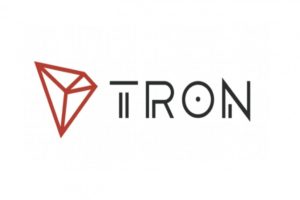
In recent days, Huobi and Tron have had some interrelated problems.
Today, though, fears of a collapse seem to have vanished, so much so that the respective tokens are performing well in the markets.
Huobi
Huobi is among the top twenty crypto exchanges in the world by market volume, and recently announced that it had some problems. In fact, it was forced to announce that it will lay off 20% of its employees.
Its HT token on 5 January suddenly lost almost 14% of its value, dropping from $5.2 to $4.7.
The following day, after the layoffs campaign was announced, the price fell another 4% to just over $4.3. In total it lost 17% in two days.
However, two hours after touching the annual low of 2023 it had already risen to $4.7, and today it has climbed back up to $4.8.
The current price is still lower than it was on 4 January, and it is 25% lower than it was 30 days ago.
So while it appears that the decline that began on 5 January is now over, the one that began in late November may instead still be ongoing.
It is worth noting, however, that during 2022 the price of the Huobi token has been decidedly volatile.
After approaching $40 in May 2021, by early October 2022 it had fallen as low as $4.1, which is a level below even the current level.
At that point, it first jumped to $9.4 in late October, then with the collapse of FTX it plummeted back to $4.4. In other words, in little more than a month it registered first +129% and then -53%.
By the end of November, however, its price had returned to $7, but at that point, the descent began, which seems to have ended on 6 January 2023 at $4.3.
It is also definitely high volatility for the crypto market.
Tron
The price of the Tron ecosystem’s native cryptocurrency, TRX, has also experienced similar swings in recent days.
On 5 January, its price was around $0.055, but the following day it had dropped to $0.050, or a loss of 9% in a single day.
However, TRX’s price also immediately rebounded, returning to $0.053, and then today rose back above $0.055.
In this case, the difference lies in the low volatility experienced during 2022, or more accurately of high volatility but significantly lower than the average volatility in crypto markets last year. It is enough to mention that in July 2021 the price of TRX was $0.055, which is practically the same as today.
Moreover, the 2022 low was precisely the $0.050 touched in November, during the FTX collapse. It is no coincidence that it also fell to this level on 6 January.
TRX then is proving to be one of the second-tier cryptocurrencies with the most consistent price, perhaps due in part to the fact that it is constantly being used to pay the fees of the many USDT transactions that take place on the Tron network.
The link between Huobi and Tron
Tying Huobi and Tron together is the founder of Tron himself, Justin Sun.
Sun is an advisor to Huobi and serves on its advisory board. He also appears to have allocated large sums of money in these troubled days to help the exchange cope with its liquidity crisis.
In addition to announcing a large layoff campaign, what has been most worrisome is that Huobi has also announced that it will pay employees in stablecoins, as well as shutting down internal staff communication channels to quell a rebellion.
Tron has its own algorithmic stablecoin, USDD, which has now lost its peg with the dollar since November. It is possible that the exchange’s employees fear being paid in USDD, and also fear further loss of value of this token.
USDD is now worth $0.97, but in June last year, it fell as low as $0.95. Being an algorithmic stablecoin, there is a fear that it could go the way of UST, although its managers claim to have enough funds to cover the entire market capitalization in excess of $700 million.
The current situation
After the crisis on 5 and 6 January, the situation for Huobi and Tron seems to have returned to normal, especially for TRX.
However, it remains to be seen what the future of the exchange will be, as the crypto bear market may continue, thus also continuing to cause problems for the exchange.
The fact that Justin Sun has to move tens of millions of dollars in cryptocurrencies to cope with the liquidity crisis also does not bode well, because sooner or later he too may run out of funds that he can use in this way.
It is worth noting that TRX’s own market capitalization, which rose to $12 billion in April 2021, is now only just over $5 billion, which is hardly enough to save an exchange like Huobi should it be on the brink of bankruptcy.
However, should the bear market end, or at least ease somewhat, these difficulties might become easier to deal with.



















